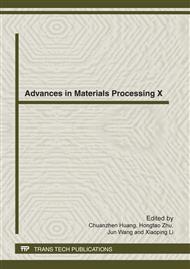p.447
p.454
p.460
p.466
p.472
p.477
p.484
p.489
p.495
Surgery Robot for Implantation of Intracranial Electrodes
Abstract:
Deep brain stimulation (DBS) is increasingly used in clinical treatment for various neurological disorders, particularly for movement disorders such as Parkinsons disease. The more the accuracy of locating the cerebral target of these diseases is, the more cure effect is, the accuracy of locating the cerebral target depends on the all surgery system. Although there have many surgery systems, for more accuracy of those locating target based on CT images, it need to develop a new kind of robotic surgery system. Some requirements of this robotic system are present in this paper, such as the movement degrees of freedom and its dimension error. Each functional sub-system of this robotic surgery system with some constraint condition is also analyzed. When all of those sytem are implemented with more precise location, predictability, reliability, and robustness sufficient for trial evaluation in stereotactic biopsy of brain lesions, the robotic surgery system can be used in clinical application.
Info:
Periodical:
Pages:
472-476
Citation:
Online since:
April 2012
Authors:
Keywords:
Price:
Сopyright:
© 2012 Trans Tech Publications Ltd. All Rights Reserved
Share:
Citation:


